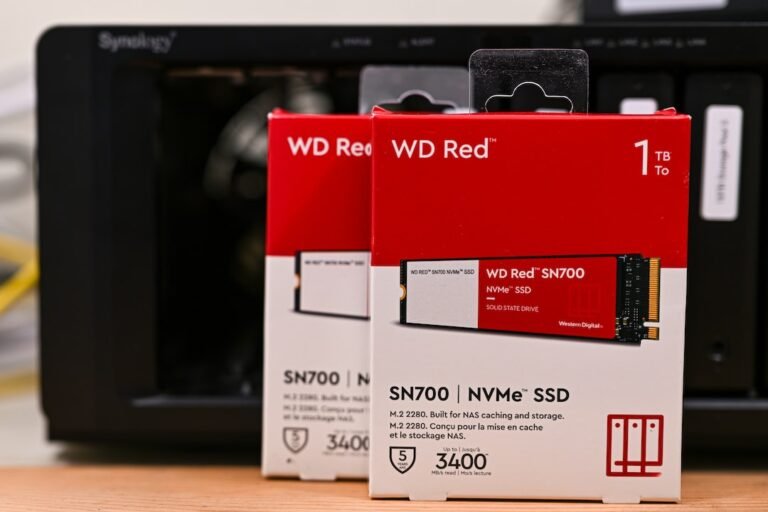Introduction
Have you ever experienced slow internet speeds or frequent connection drops? It can be frustrating, especially when you’re in the middle of an important task or trying to stream your favorite show. The good news is that you can take control of your network and optimize your internet performance by configuring load balancing routers with open source firmware. In this article, we’ll explore the world of multi-WAN configurations using open source firmware, and discover how it can revolutionize your home network setup. So, let’s dive in and unlock the true potential of your internet connection!
What is Multi-WAN and Load Balancing?
Before we delve into the depths of open source firmware, let’s first understand what multi-WAN and load balancing are all about. Multi-WAN, or Multi-Wide Area Network, refers to the use of multiple internet connections in a network setup. This can include different types of connections such as DSL, cable, fiber, or even cellular. By leveraging multiple connections simultaneously, you can enhance your internet speed, improve network reliability, and distribute traffic efficiently.
Now, let’s talk about load balancing. Load balancing is the process of distributing network traffic across multiple connections, ensuring each connection is utilized optimally. It intelligently divides the workload between different internet links, preventing congestion and maximizing performance. Load balancing routers are designed to deliver seamless internet connectivity and an uninterrupted online experience.
Why Open Source Firmware?
When it comes to configuring load balancing routers, open source firmware provides a whole new level of flexibility, customization, and control. Open source firmware is community-driven, meaning that it’s constantly evolving and improving based on the contributions of its users. It’s built on the principles of transparency and collaboration, allowing users to modify and personalize their router’s functionality according to their unique requirements.
By using open source firmware, you can unlock advanced features that are not typically available in off-the-shelf routers. This includes granular control over load balancing algorithms, the ability to integrate with third-party tools and services, and enhanced security options. Open source firmware empowers you to take charge of your network and optimize it according to your specific needs.
Configuring Load Balancing Routers with Open Source Firmware
Now that we understand the benefits of open source firmware, let’s explore how to configure load balancing routers using this powerful software. Here are the steps to get you started:
1. Choose the Right Hardware
The first step is to select a compatible router that supports open source firmware. Popular options include models from brands like Linksys, TP-Link, and ASUS. Make sure to check the compatibility list of the firmware you intend to use, as different routers may have different firmware options.
2. Install Open Source Firmware
Once you have your router, the next step is to install the open source firmware of your choice. There are several options available, including OpenWrt, DD-WRT, and Tomato. Each firmware has its own unique features and user interface, so choose the one that best aligns with your requirements.
3. Configure WAN Connections
After installing the firmware, it’s time to configure your WAN (Wide Area Network) connections. This involves connecting your internet service providers’ modems or routers to the corresponding ports on your load balancing router. Follow the firmware’s documentation to set up each WAN connection and ensure smooth integration.
4. Set Load Balancing Policies
One of the key benefits of open source firmware is the ability to customize load balancing policies. This allows you to fine-tune how your router distributes traffic across multiple connections. You can prioritize certain connections, define bandwidth limits, or even create specific routing rules based on source or destination IP addresses. Experiment with different policies to find the optimal setup for your network.
5. Monitor and Optimize Performance
Once your load balancing router is up and running, it’s important to monitor its performance and make necessary adjustments. Most open source firmware options offer comprehensive monitoring tools and real-time statistics. Keep an eye on bandwidth usage, latency, and connection stability. If you notice any issues, tweak your load balancing policies accordingly to ensure peak performance.
Conclusion
Configuring load balancing routers with open source firmware can elevate your home network setup to new heights. By harnessing the power of multi-WAN configurations, you can enjoy faster and more reliable internet connectivity. Open source firmware empowers you to customize and optimize your network according to your specific requirements. So, take the plunge, explore the world of open source firmware, and transform your internet experience today!
FAQ
Q1: How can configuring load balancing routers improve my internet speed?
A1: Load balancing routers distribute traffic across multiple connections, ensuring each connection is utilized optimally. This can result in faster internet speeds and reduced congestion.
Q2: Can I use different types of internet connections for load balancing?
A2: Absolutely! Load balancing routers support various types of connections, including DSL, cable, fiber, and even cellular connections. You can mix and match different connections to maximize performance.
Q3: Where can I find compatible routers for open source firmware?
A3: You can find a list of compatible routers on the websites of popular open source firmware projects like OpenWrt, DD-WRT, and Tomato. Check their documentation or community forums for more information.
Q4: What are some common load balancing policies I can configure?
A4: Common load balancing policies include round-robin (equal distribution of traffic), weighted (prioritizing certain connections), and source/destination IP-based routing. Each policy has its own benefits and use cases.
Q5: Are there any security considerations when using open source firmware?
A5: Yes, while open source firmware provides customization options, it’s important to ensure proper security measures are in place. Enable features like firewall protection, VPN support, and regular firmware updates to keep your network secure.
Q6: My load balancing router is not performing as expected. What should I do?
A6: First, monitor network performance and identify any specific issues. Then, tweak load balancing policies or seek assistance from the open source firmware community forums. They can provide valuable insights and troubleshooting tips.
Further Reading
| Website | Description |
|---|---|
| OpenWrt.org | The official website of OpenWrt, a popular open source firmware for routers. |
| DD-WRT.com | Explore DD-WRT’s website for information on their open source firmware. |
| Tomato Firmware | Learn more about the features and capabilities of the Tomato firmware. |




